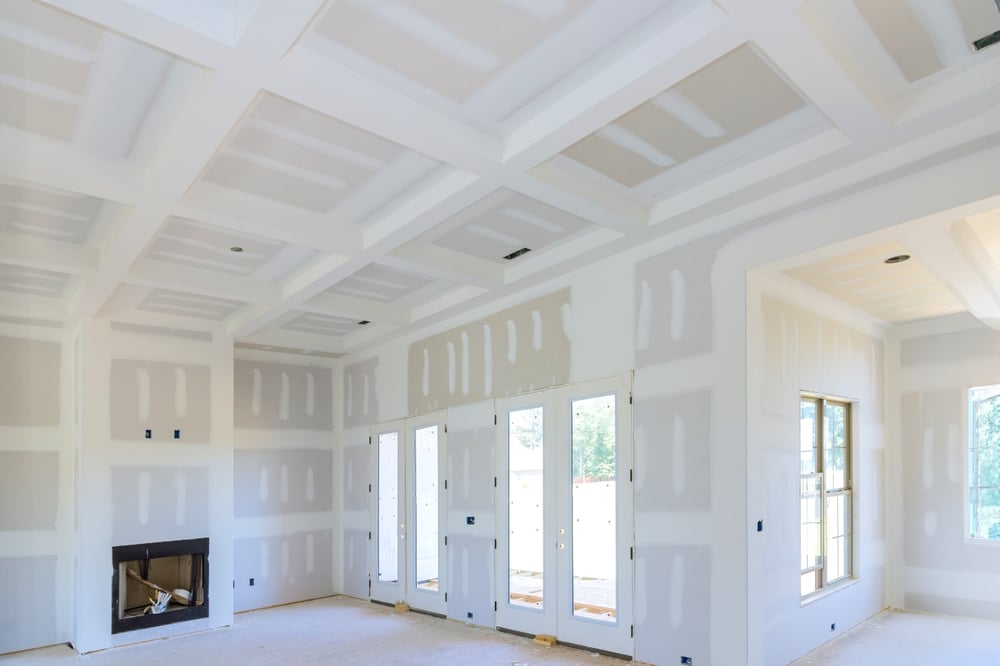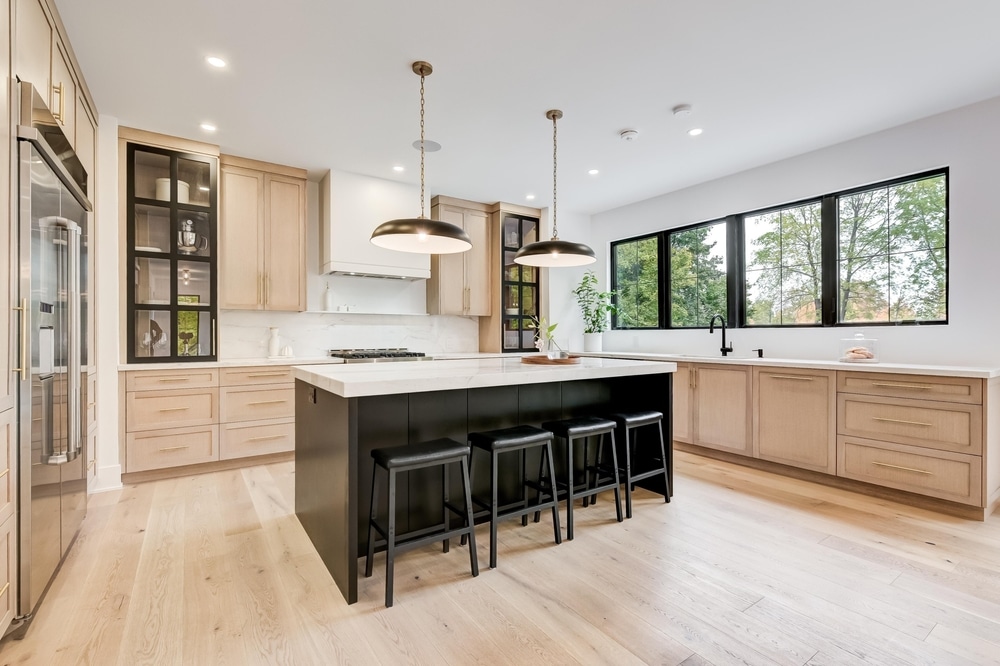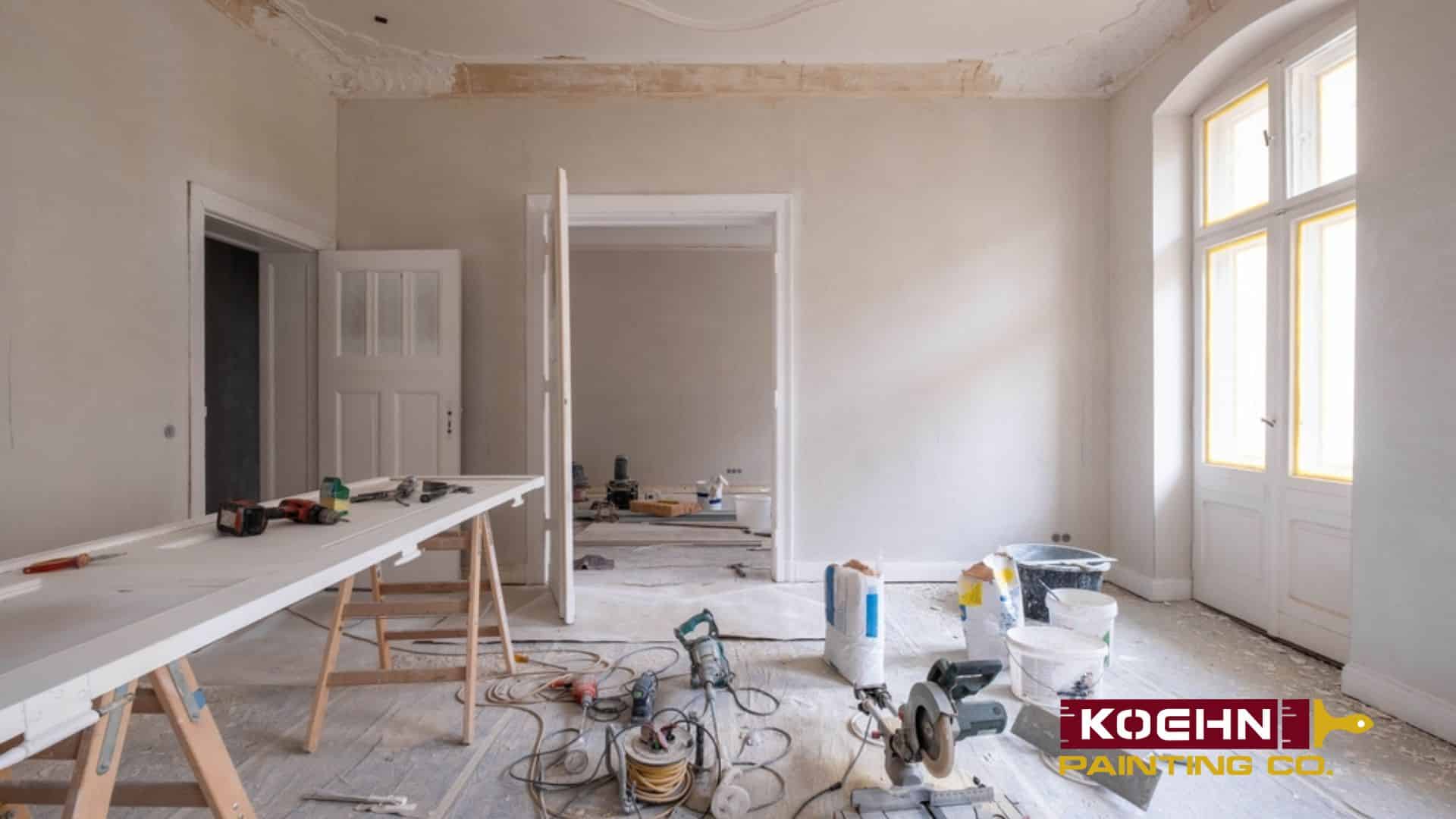Table of Contents
ToggleWhen collecting home renovation tips, remember that a successful remodel begins long before demolition day: it starts with crystal-clear goals, a realistic budget and timeline, and meticulous documentation. Treat the project as a complex, multi-trade operation—because that’s what it is—and ground every decision in your overarching “why,” whether that’s resale value, energy efficiency, or accommodating a growing family.
Double even the rosiest time estimate, reserve a 10-20 % contingency fund for the inevitable surprises, and keep a single binder (or digital equivalent) that houses plans, permits, contracts, invoices, and change orders so nothing slips through the cracks.
Nine practical tactics keep the chaos at bay. First, plan for cost overruns and pay by milestones, not lump sums. Second, use detailed, scaled drawings and a well‑organized project binder to avoid costly mid‑stream changes. Third, vet contractors rigorously—check licenses, insurance, references, and crew consistency—and choose a contract structure you truly understand.
Fourth, over‑communicate: hold weekly site meetings, circulate updated plans, and photograph progress. Fifth, don’t start demolition until every major material is on-site and physically tested in your home’s lighting. Sixth, decide early whether you can live through the mess or need temporary housing, and if you stay, isolate dust with zipwalls and HEPA filtration. Seventh, inspect work as it happens and document any change orders immediately.
Eighth, manage renovation stress with clear expectations, firm boundaries on scope creep, and regular breaks from the job site. Ninth, pull the proper permits, welcome inspections, and know exactly who’s responsible for code compliance.
When planning, documentation, and communication take the lead, you safeguard your wallet, timeline, and sanity, transforming what could be a nightmare into a valuable, growth-oriented experience. Let’s dive deep into this.
Before Swinging the Hammer: How to Think Through a Home Remodel

A successful home remodel doesn’t start with Pinterest boards or demolition day; it starts with clear expectations. One of the most common traps homeowners fall into is underestimating the scale of what they’re taking on.
Remodeling isn’t the same as redecorating. A remodel means structural change, coordination across trades, and (often) permits and inspections. It’s messy, it’s complex—and it requires a plan.
Americans spend over $500 billion a year on home improvements and repairs, yet a significant portion of that spending goes toward fixing mistakes that stem from poor planning or scope creep.
That’s why one of the most important home renovation tips you’ll ever hear is this: know your project’s scope before you begin. Is this remodel focused on cosmetic upgrades (paint, flooring, lighting), or is it addressing deeper functionality, like layout changes, plumbing, or insulation? The difference matters. Aesthetic upgrades can be budgeted and timed with relative precision. Structural changes? Not so much.
And then there’s the timeline myth. No, your kitchen remodel will not be finished in “two weeks.” Even the most efficient contractors face unpredictable variables: permitting delays, material backorders, or weather issues for exterior work. Estimates indicate that a typical kitchen remodel takes 6 to 12 weeks after demolition begins, with planning and design taking an additional month or two before demolition.
Setting a realistic timeline and doubling your most optimistic estimate will save you a lot of frustration. Rushing trades or overlapping tasks almost always lead to rework—and rework costs money.
Finally, take time to define your “why.” Are you renovating to increase resale value in the next year? Accommodate a growing family? Make your home more energy efficient? Every decision down the road—materials, layout, finish quality—should ladder back to this purpose.
The clearer your intentions, the easier it becomes to make tough calls when budgets or timelines get tight. And they will.
For more no-nonsense advice like this, let’s get into our home renovation tips to plan smarter, not harder.
Contact us here if you would like to find the best painting contractor for your residential or commercial painting needs.
9 Practical Home Renovation Tricks for Better Planning

So, what is the hardest part of home renovation? Ask any homeowner who’s been through it, and you’ll hear the same answer: it’s not picking paint colors or tile samples, it’s the planning. The behind-the-scenes logistics. The surprises that wreck your timeline. The permit you didn’t know you needed. That’s where most projects go off the rails.
For anyone renovating a house with no experience, this can feel overwhelming. And even seasoned renovators agree: no two projects are the same. That’s why you need a plan, not just an idea or an inspiration board you found online.
The good news? With the right home renovation tips, you can avoid most common mistakes before they ever happen. Below, we’ve outlined the nine essential tactics that can make or break your remodel—whether you’re doing a kitchen facelift, an attic conversion, or a full home remodel.
Let’s break them down.
1. Renovation Budgets: Plan for Chaos
If you only follow one rule in this entire guide, let it be this: your renovation will cost more and take longer than you think. Not because your contractor is sloppy, but because renovation is full of unknowns, especially in older homes. Rotten subfloors, outdated wiring, or structural surprises can derail even the best-planned job.
Unforeseen costs and budget overruns rank among homeowners’ top frustrations during remodels. Widespread cost overruns in renovation projects, being one of the biggest financial risks people can take, home improvements come with steep psychological stakes.
Even the most carefully planned home renovation can uncover costly surprises. Experts recommend adding a 10–20% contingency fund to your baseline budget to keep your remodel on track, even when the unexpected hits.
Avoid large upfront payments. Instead, structure payments around milestones, like demolition complete, drywall up, and painting finished. It protects you and keeps the project moving.
2. Planning & Documentation
A solid binder and well-drawn plans are your lifeline during any home renovation, especially if you’re renovating a house with no experience. This stage separates headache-free projects from chaos, and it addresses the question: What is the hardest part of home renovation? Often, it’s navigating paperwork and avoiding mistakes that can’t be undone.
Treat your binder like mission control. Include and update the following sections regularly:
- original and revised plans
- permit copies
- contracts
- Invoices
- materials lists
- photos
- change orders.
Keeping everything in one place helps minimize overwhelm and streamlines decision-making when things pile up. This isn’t fluff; it’s essential. A comprehensive binder protects you if questions or disputes arise mid-project.
Additionally, ensure that you thoroughly understand your contract and document, including every detail. Your contract defines scope, responsibilities, pricing, timeline, and deliverables. Don’t just skim, invest the time to read every line. Ensure it’s clear who is sourcing materials, who is responsible for obtaining the necessary permits, and how change orders will be handled.
Always document any deviations immediately. If there’s a seating change or layout tweak, sign and file the revised agreement. It’s not paperwork torture; it’s protection.
Here, we remind you to never rely solely on imagination or inspiration boards. Scaled floor plans act as your spatial reality check. Architecture pros and consumers alike emphasize their value:
- They identify layout issues before construction, reducing expensive missteps.
- Visualizing furniture, calculations, and room usage helps detect cramped corridors, poor flow, or gaps in functionality.
Whether you use CAD, a free tool, or just painter’s tape on the floor, a test layout brings clarity to the design. When you map things to scale, you avoid “after it’s done” regrets.
3. Finding a Renovation Team You Can Actually Trust
Choosing the right contractor is one of the most crucial decisions in any home renovation, and it’s one of those home renovation tips every homeowner needs to take seriously. A great plan means nothing with the wrong people behind the tools. Here’s how to vet and select a team that delivers:
Start with real-world credentials. Check licenses, insurance, and certifications to ensure they’re valid and up to date. Visit past job sites if possible. A portfolio online won’t always match what they really deliver, but meeting finished spaces in person gives you clarity. Don’t skip the references: ask previous clients about communication, reliability, and whether the project was completed on schedule and within budget.
Remember, what’s agreed at the estimate stage isn’t always who shows up. Ask specifically: “Is the crew I meet today the one working on site every day?” Subcontracting is a common practice, but multiple crew changes can lead to miscommunication and delays.
Also, clarify how your contract frames payment and responsibility:
- A fixed-bid contract offers a firm price—your best friend when budget is tight—but means less flexibility for mid-project changes.
- A cost-plus contract, by contrast, bills you for materials and labor plus a contractor fee or percentage. It’s transparent, but if not managed well, costs can spiral.
Each model has pros and cons, but clarity is key; make sure you understand what you’re paying for and how changes are handled.
When you combine positive reviews, consistent crews, and the right contract model, you’re building trust that’s backed by evidence, not marketing. This gives you peace of mind and puts real teeth behind your home remodel expectations.
4. The Secret to Smooth Renovations? Talk More
Communication isn’t a nice-to-have; it’s the secret to every successful home remodel. A halfway house in the form of misunderstandings, broken schedules, or misprinted cabinets is where projects fall apart. Here’s what proactive communication looks like:
- Weekly meetings with your CG and subcontractors keep everyone aligned. Regular check-ins would decrease the probability of conflicts and ensure completion of the work.
- Share updated plans consistently, digital or physical. When new information or schedules change, distribute revised drawings or summaries immediately. This minimizes confusion across crews and prevents the dreaded “I didn’t get the memo” scenario.
- Take before-and-after photos and document every decision. It’s not just for your scrapbook; photo documentation safeguards your investment, aids insurance claims, and provides proof of the agreed-upon work. Keeping a photo trail helps you track hidden elements—like plumbing or walls—before they vanish behind drywall.
A good idea is to label photos by date and area, and archive notes about every call, email, or in-person chat. This level of detail protects you in the event of disagreements and ensures the project moves efficiently.
Ultimately, talking more isn’t micromanagement: it’s smart management. The key questions are simple: What’s happening this week? Is everything on schedule? Any bottlenecks? Stay in front of the conversation. A clear communication loop isn’t just a home renovation tip; it’s the engine that drives a successful remodel.
5. Managing Materials & Supply Chains
When planning your home renovation, one of the biggest pitfalls is starting demolition before your materials are ready. Incomplete delivery of essential items can stop progress cold and lead to escalating costs.
Follow these 3 steps to ensure clarity and good results:
- Don’t begin demolition until all key materials are onsite. Missing items at the outset, like flooring, cabinets, or fixtures, often halt work for weeks while waiting for delayed orders. U.S. News echoes this: “Don’t start the work until you have the materials you need” to prevent costly downtime.
- Test physical samples in your actual space and lighting. It’s tempting to rely on online images or store swatches, but those don’t translate accurately. You can always try painting sample patches directly on your wall, with at least two coats, to see how light affects pigment and undertones. Designer blogs also emphasize trying paint samples on multiple walls at different times of day to ensure consistency under changing light.
- Clarify what’s included in your contractor’s quote. Custom or specialty items often have lead times or hidden costs. It’s good to know that supply chain issues and permit errors can delay your timeline, so clear expectations in your contract help avoid surprises. With materials in hand and roles clearly defined, you’ll stay on schedule and budget.
Basically: starting a demo without materials leads to idle crews and wasted money; real-world testing ensures your selections—from paint to tile—look good in the actual space, and a clear contract protects you from last-minute swaps or mid-project billing surprises.
Plan ahead, verify in person, and document every detail.
6. Should You Stay or Go During a Home Renovation? Pros & Cons
Deciding whether to live in your home during a renovation depends on your project’s scale and what you can tolerate. Many ask, “What is the hardest part of home renovation?” Living through it often ranks at the top. You need somewhere to prepare meals, sleep, and decompress. Here’s a breakdown of what works best:
You can set up a temporary kitchen or living area in your garage, basement, or a spare room. Equipped with an electric griddle, coffee maker, mini-fridge, and folding table, it allows you to cook simple meals without relying on takeout. According to RGH Development, this setup often pays for itself by reducing dining-out expenses and maintaining a sense of normalcy during extended home renovation projects.
But living in the thick of the worksite isn’t for everyone. Dust, noise, and rearranged routines can wear on even the most resilient homeowner. Staying on-site can prolong your timeline, raise stress levels, and create safety hazards, especially for children or pets…
So, what should you do if this is the case? Some people choose to stay somewhere else until all the disruptive stuff is done, and it’s fair. Many people just can’t mix daily life with renovation chaos. However, if you do choose to stay, contain dust and debris with proven methods:
- Erect zipwalls or plastic barriers, sealing off demolition areas and creating negative pressure with fans
- Use HEPA or shop vacuums, and duct the exhaust outside.
- Tape off vents and install thick plastic sheets with zippers for easier, cleaner containment
If stress, safety, or logistics tip the scale, consider temporarily relocating, staying with friends or family, or renting a short-term accommodation. Sometimes, even when it’s not the best option, moving out can accelerate timelines and reduce onsite complications, but weigh that against rental costs and disruption.
Stay in place if you’re okay with noise, dust, and adjusting routines, and want oversight and savings, or move out if you value sanity, speed, and a clean break from construction chaos.
7. Double Check Everything: Quality Control Saves You Later
When you’re deep into a home renovation, it’s tempting to assume the crew will get everything right. But trusting without verification is a fast track to costly mistakes, and fixing them later is always more expensive. Here’s how to ensure top-notch quality as you go:
- Inspect every installed element. Don’t walk past new tile, trim, or fixtures as “done.” Take a close look: are grout lines straight? Do cabinet doors align? Is the paint finish even? Common issues like uneven floors or misaligned hardware are best caught before walls are closed and flooring is laid.
- Focus on hidden infrastructure: Things like plumbing, electrical, HVAC, and insulation might not be visible, but they’re mission-critical. Homeowners to pay close attention to what’s behind walls—pipe fittings, clearances, installation quality—because “once it’s covered up, it’s too late”.
- Verify and confirm every change with a formal order. Mid-project tweaks—such as relocating an outlet or switching tile styles—may seem harmless, but can impact the budget and timeline. Change orders are essential legal documents that ensure both you and your contractor agree to the new scope and cost before the work resumes.
In essence, early detection of mismatches will save you rework and money. Hidden work that fails on inspection can become major future headaches, while formalizing changes will keep projects transparent, avoid disputes, and ensure everyone stays on the same page.
8. Home Renovation Stress Is Real—Here’s How to Cope
Renovations aren’t just physically disruptive—they can hit your mental health too. Surveys showed that 60% of homeowners experience stress or anxiety during projects, with disruptions most common when renovating kitchens or living areas. Here’s how to manage that stress before it derails your renovation or your mood:
- Set expectations with your partner or family: Sit down early and agree on how the project will unfold: what gets prioritized, acceptable noise levels, and shared responsibilities. Planning together and communicating openly reduces tension and boosts teamwork.
- Accept setbacks without losing your composure: Surprises are part of the process, including broken tiles, permit delays, and unexpected repairs. Practice acceptance. Recognize that not everything is within your control, which will help you stay focused and calm. Scope creep—also known as continually adding small changes—can quickly increase your budget and stress, so set boundaries from the beginning.
- Avoid last-minute “while you’re at it” requests: Every additional “quick add-on” can ripple into delays and cost creep. Homeowners have noticed that delaying decisions often snowballs into bigger issues, and pros echo that sticking to the original plan keeps stress in check. So, before suggesting extras during a project, ask: Does this align with our plan, budget, and timeline?
Revisit this stress-buster checklist anytime you need:
- Plan a break from the side—go out for dinner, walk, or stay elsewhere for an evening.
- Use noise-canceling headphones or designate a retreat zone away from the work.
- Block off your schedule around key milestones to avoid logistical friction.
Renovation stress is real, but it doesn’t have to take over your life. With clear communication, emotional preparedness, and firm boundaries on scope creep, you’ll navigate the chaos confidently.
9. Permits and Inspections: What You Need to Know (Before You Build)
Permits and inspections might seem like red tape, but they’re non-negotiable in any legitimate home renovation.
They exist to protect your safety, your investment, and your future resale value, and skipping them can lead to fines, delays, or worse. In fact, unpermitted work can void your insurance coverage or derail a home sale.
According to Investopedia, any major change to your home’s systems or structure—like electrical, plumbing, HVAC, or load-bearing walls—typically requires a permit. Even minor upgrades can trigger legal requirements depending on your local regulations.
The process can differ by city or county, but it usually begins with submitting detailed project plans to your local building department. These drawings may need to be professionally prepared and approved before the permit is issued. Then come the inspections, scheduled at key stages such as foundation, framing, rough-ins, and final finishes. Each phase must be approved before the next one starts. Missing one could mean tearing out work to show it meets code.
Homeowners often underestimate the amount of paperwork and coordination required for this part of the job, especially if multiple permits are involved.
Working with inspectors is part of the process, and building a cooperative relationship helps a lot. Inspectors aren’t there to fail your project; they’re there to ensure safety and code compliance. If something isn’t up to standard, they’ll tell you how to fix it.
Being respectful, prepared, and communicative can speed up approvals and keep things moving. If you’re unsure about your jurisdiction’s requirements, a quick call to your local building department can clear up confusion. Don’t guess; ask.
Ultimately, getting permits and passing inspections might feel tedious in the moment, but they’re what keep your renovation legal, insurable, and up to standard. Whether your contractor pulls the permit or you do, make sure that responsibility is clearly defined in writing. Because when it comes to code enforcement, “I didn’t know” won’t protect you from penalties, or from having to tear something down.
Final Thoughts: These Home Renovation Tips Really Do Make a Difference

By now, it’s clear that successful home remodeling isn’t just about picking beautiful materials or hiring a contractor with the lowest bid; it’s about strategy. These home renovation tips are designed to help you avoid the chaos that many homeowners encounter, including ballooning budgets, communication breakdowns, misaligned expectations, and endless delays.
Remodeling isn’t easy, but it doesn’t have to be a disaster. When you plan thoroughly, document everything, and build a team you trust, you take control of the process. The right prep, people, and mindset can make all the difference between a nightmare and a transformation you actually enjoy.
At Koehn Painting, we’ve helped countless homeowners bring their vision to life without losing their cool (or their wallets). Whether it’s a single room refresh or a full-scale renovation, we take pride in being the kind of crew that shows up, communicates clearly, and gets it right the first time.
Discover the Koehn Painting difference – contact us today for a free estimate and step into a vibrant, freshly painted home!




